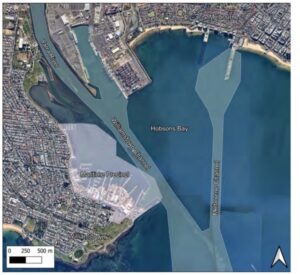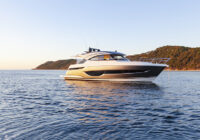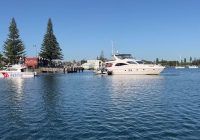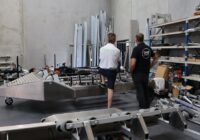The BIA in Victoria (BIAV) have expressed their disappointment on receiving the Williamstown Maritime Precinct Wave, Wash and Surge Study, and in particular the Stage 3 Mitigation Options.

BIAV was instrumental, along with a highly engaged stakeholder group that developed into the Port of Williamstown Action Group (PoWAG), in terms of identifying the problems and risks, and calling on authorities to act. In October 2018, BIAV and an extensive stakeholder group wrote to the then Ports Minister Luke Donnellan about the problems and risks. By early 2019 a new Minister, Melissa Horne was in place and the study was commissioned with Parks Victoria. Consultants were soon sourced, and things got underway. Despite covid interruptions, the project priorities remained.
BIAV and PoWAG became convinced and confident that the problems and risks would be measured, effect would be fully considered, and remedy action provided. Or at least, that the best overall remedies would be identified. The need for Safe Harbour status for the Williamstown maritime precinct became very clear, and that became the ‘mantra’ of those calling for action.
The findings of this study, and in particular the Stage 3 Mitigation Options and Recommendations (see below) fall short of this, and the need for a Safe Harbour, is seemingly ignored.
In summary, educating and informing vessel users about vessel speed and movement, whilst marinas, clubs and businesses sort their own wave attenuation and protection, is well below what was expected.
The precinct, despite its history and current day value will, as a result, remain the most unprotected maritime asset of its kind that our group is aware of. The risk to infrastructure, personal property, boats, businesses, and to wellbeing and life, may well remain.
This position statement does not criticise the overall study, however does highlight that the mitigation options are not of the required standard.
Expectations were, and remain, that the study inform what it would take to make the precinct protected and safe. Options to consider should have included, but not been limited to; rock walls, floating attenuators, artificial reefs, dredging, silt removal, and run-off drains.
We will watch with interest if informing and educating larger vessel drivers has the desired effect, and we hope that we are wrong, and that it does.
Recommendations in priority order
The comparative assessment provides direction regarding the relative effectiveness of each mitigation. The following is a list of recommendations in priority order, with consideration of the overall scores, which account for effectiveness (likelihood) and consequence criteria.
- Modification, i.e., extension, of a 5kt zone speed limit from the Williamstown foreshore to the channel boundary of the Williamstown channel, including navigational aids and signage, and an education campaign targeting the main users of this area, namely recreational boats and small to medium sized commercial vessels.
- Undertake speed controlled trials and route changes on Fast Ferries to test avoiding the critical speeds (e.g., 17-20kt) to determine the best low wash and wake operating conditions for these ferries. Consideration in the trials should be given to rapid versus slow accelerating and decelerating, in line with the vessel design and capacity.
- Explore implementation of education and enforcement of speed control / limit of large commercial vessels e.g., cargo, tankers, cruise ships) as well as port support vessels (e.g., tugs, pilot boats and port tenders), in collaboration and engagement with VPCM / Ports Victoria, the Harbour Master, and their teams.
- The marinas, yacht clubs and foreshore businesses plan for future wave attenuation at a local scale to provide wave protection suitable for each of their facilities.
- Re-alignment of berths within the marinas (likely to only be feasible if/when marinas are refurbished / upgraded and may not be feasible nor viable for all marinas).
For more information visit: www.biavic.com.au








